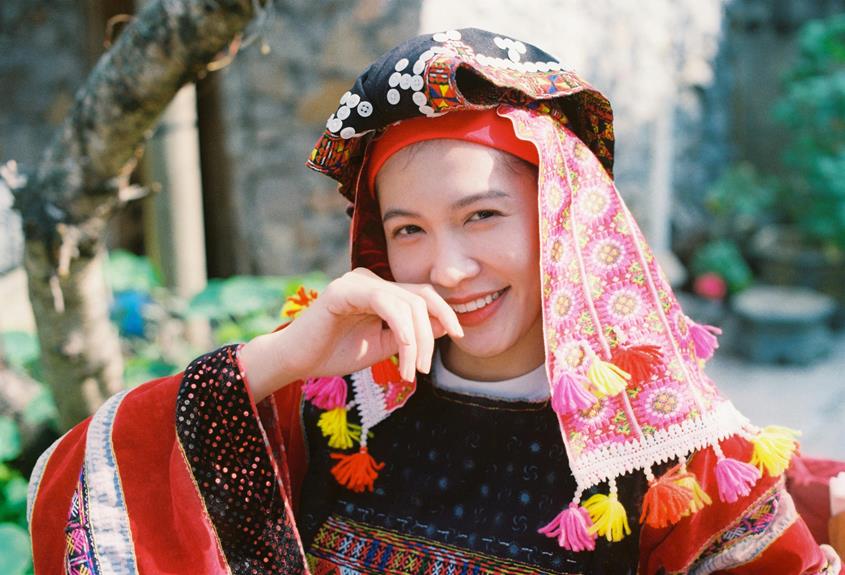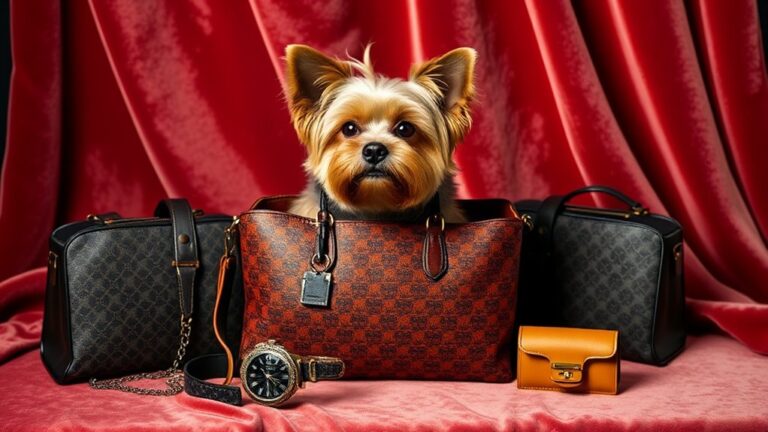What Is Retro Fashion
Retro fashion is a style that draws inspiration from trends and designs of the past, typically from 20-40 years ago, and reinterprets them with a modern twist. Characterized by iconic silhouettes, distinctive colors, and patterns that evoke nostalgia, retro fashion blends old and new elements. Key pieces include oversized blazers, high-waisted jeans, and bold patterns, which are often combined with contemporary basics. As the popularity of retro fashion continues to grow, fueled by nostalgia and a desire for sustainability, it remains a dynamic and evolving style. Exploring the nuances of retro fashion reveals a rich history and multiple facets.
Defining Retro Fashion
Retro fashion is often associated with a distinct aesthetic that draws heavily from past trends, typically spanning 20-40 years. This phenomenon is deeply rooted in retro fashion psychology, which taps into cultural nostalgia and our innate desire to revisit fond memories.
The concept of retro fashion originated in London, where designers used the term to describe derivative or imitative fashion designs that evoke nostalgia for earlier decades. By incorporating iconic silhouettes, distinctive colors, and patterns reminiscent of specific eras, retro fashion creates a sense of nostalgia and timelessness.
As a result, retro fashion has become a staple in modern fashion, allowing individuals to experience and reinterpret the styles of the past while still embracing contemporary tastes and preferences. This blend of old and new defines the essence of retro fashion.
Types of Retro Clothing
As the fashion world continues to draw inspiration from the past, various types of retro clothing have emerged, reflecting a blend of nostalgia and modern sensibilities.
Two notable categories within retro fashion are Vintage-Inspired Retro Clothing, which closely replicates the styles of former eras, and Modern Retro Style Trends, which update classic silhouettes with contemporary materials and twists.
These distinct approaches to retro fashion cater to different tastes and preferences, allowing individuals to choose the level of authenticity and innovation they desire in their retro-inspired wardrobe.
Vintage-Inspired Retro Clothing
Remarkably, many styles from the past have been revitalized in contemporary fashion, with vintage-inspired retro clothing often replicating trends that are 20-40 years old.
This type of retro clothing is characterized by nostalgic styles that evoke a sense of familiarity, while maintaining a modern feel. Key elements of vintage-inspired retro clothing include iconic trends, vibrant colors, bold patterns, and recognizable silhouettes.
Oversized blazers, high-waisted jeans, and distinct patterns like polka dots and animal prints are popular retro items. Accessories like beaded necklaces, big earrings, and colorful bangles also play an essential role in enhancing the vintage vibe.
Many modern brands produce retro-inspired pieces that blend authentic vintage styles with current fashion sensibilities, catering to consumers seeking both nostalgia and contemporary appeal.
Modern Retro Style Trends
What defines modern retro fashion, and how does it blend nostalgic elements with contemporary sensibilities?
Modern retro style trends are characterized by the incorporation of iconic styles from past decades, reimagined for the present. Key elements include oversized blazers, high-waisted jeans, and vibrant neon colors.
Contemporary retro clothing also features nostalgic aesthetics, such as polka dots, animal prints, and groovy floral designs, adding a playful touch to modern outfits. Accessories, like big earrings and colorful bangles, play a significant role in completing the retro look.
While inspired by vintage fashion, many modern retro styles are newly made, offering consumers a fresh take on nostalgic fashion. This blend of old and new creates a unique style that is both retro and modern.
Key Elements of Retro Style
Nostalgia plays a significant role in shaping the aesthetic of retro fashion, with vibrant colors and bold patterns evoking the carefree spirit of past eras. Key to this style is the use of distinctive color palettes and iconic silhouettes.
Incorporating oversized blazers with shoulder pads, flared and bell-bottom pants, and acid-washed denim, retro fashion brings back the staple pieces of past decades. Popular patterns include polka dots and animal prints, alongside groovy floral and artsy designs. These elements combine to create a retro look that is both nostalgic and modern.
With the use of contemporary materials, retro clothing replicates the silhouettes and designs of past trends, making it accessible and fresh. Accessories such as beaded necklaces, big earrings, and leg warmers complete the distinctive outfits of retro style.
The Rise of Retro Fashion
Retro fashion trends have undergone significant transformations over the years, influenced by a mix of cultural reevaluation and nostalgia.
The rise of retro fashion can be attributed to various factors, including the cyclical nature of fashion, which has seen a resurgence of past styles in different decades, and the growing interest in sustainability.
As the fashion industry continues to evolve, it is essential to examine the influences on retro style, from the 1970s revival of 1940s to 1960s designs to the present-day preference for vintage-inspired clothing.
Retro Fashion Trends
The 1980s witnessed a dramatic resurgence of former styles, as fashion trends began to draw heavily from the aesthetic of the 1950s to early 1970s.
This revival of retro fashion was characterized by vibrant colors and bold patterns, often incorporating modern materials to cater to consumer desires for individuality and self-expression.
Retro fashion trends were popularized by iconic figures who embodied the era's playful and flamboyant spirit.
Retro fashion events and icons often featured:
- Oversized blazers with shoulder pads, reflecting the power dressing of the 1980s
- Flared pants and acid-washed denim, highlighting the era's bold approach to fashion
- Statement accessories adorned with polka dots, animal prints, and groovy floral motifs, adding a touch of nostalgia to contemporary styles
Influences on Retro Style
Characterized by its eclectic blend of past and present, retro fashion's widespread popularity in the 1980s can be attributed to a complex interplay of cultural, social, and historical factors.
A cultural revival of sorts, retro fashion drew inspiration from the 1950s and 1960s, fueled by fashion nostalgia for earlier decades. The rise of second-hand shops in 1960s London also played a significant role, popularizing the consumption of vintage clothing.
Media representations, such as television shows and films like "Grease" and "Happy Days," further popularized retro styles. Additionally, the cyclical nature of fashion, with styles resurfacing every 20-40 years, contributed to the resurgence of 1950s aesthetics in the 1980s-2000s.
This nostalgia-driven phenomenon has continued to influence fashion trends to this day.
How to Incorporate Retro Pieces
Incorporating just a few carefully chosen retro pieces can instantly elevate a modern wardrobe. To achieve this, start by selecting key items that reflect iconic styles from specific decades.
Consider the retro color palettes and iconic fashion moments that defined each era.
- A fitted 1950s-inspired dress in a bold, red hue
- A pair of high-waisted, distressed denim jeans from the 1980s
- A statement, oversized blazer with shoulder pads, reminiscent of 1980s power dressing
Mix and match these retro pieces with modern basics to create balanced outfits that highlight the vintage elements without overwhelming your look.
Accessorize with vintage-inspired items, like beaded necklaces or leather jackets, to enhance the retro vibe of your ensemble.
This thoughtful approach will allow you to incorporate retro pieces into your wardrobe while maintaining a cohesive, modern style.
Retro Fashion Vs Vintage Clothing
Retro fashion and vintage clothing often overlap in the domain of fashion, yet they represent distinct concepts with unique characteristics.
While retro fashion refers to modern clothing styles inspired by trends from 20-40 years ago, vintage clothing consists of authentic pieces that are 40-100 years old. The term "vintage" signifies authenticity and historical significance, whereas "retro" focuses on nostalgic reinterpretations.
Retro clothing often mimics past silhouettes, colors, and patterns, but lacks the vintage authenticity associated with genuine age. Both retro and vintage styles can coexist in a wardrobe, with retro fashions reviving past looks, such as 80s babydoll dresses inspired by 50s designs, showcasing their cyclical relationship in fashion.
This blend of retro style and vintage authenticity creates a unique and dynamic fashion landscape.
Sourcing and Shopping Retro Fashion
Various avenues exist for sourcing retro fashion, catering to diverse preferences and shopping styles. Specialty retro boutiques and online retailers offer curated selections of vintage-inspired pieces.
For those seeking unique finds, thrift shopping and car boot sales are popular options, but require careful scrutiny to guarantee authenticity.
- Thrifting through crowded racks to find a 1960s-era dress
- Scouring car boot sales for rare vintage accessories
- Browsing online marketplaces to discover reproduction brands that create authentic vintage replicas
Reproduction brands create authentic vintage replicas using contemporary techniques, making classic styles accessible to a new generation.
With patience and diligence, shoppers can find authentic retro fashion pieces that reflect their personal style and aesthetic.
Final Thoughts
Retro fashion's enduring presence in modern style is evident in its continued influence on contemporary designers and consumers. The cyclical nature of fashion guarantees that past trends will inevitably resurface, often with updated twists. As fashion evolves, retro styles remain a staple, allowing individuals to connect with the past while expressing their personal taste. The intersection of nostalgia and modernity drives the ongoing appeal of retro fashion, securing its place in the ever-changing fashion landscape.







